What You Need to Know about Exercise and Diabetes
Do you have type 1 diabetes, type 2 diabetes, or prediabetes? Then you need to know that exercise is a cornerstone in the management of all of these conditions, and it can benefit your health in so many ways.
 Sometimes, being active can actually make it more challenging for you to manage your blood glucose (“blood sugar”) levels, unless you learn more about its effects. I have always known at some level that exercise generally did good things for my blood glucose, even before I had my first blood glucose meter (after going 18 years without access to one). How could I tell without a blood glucose meter?
Sometimes, being active can actually make it more challenging for you to manage your blood glucose (“blood sugar”) levels, unless you learn more about its effects. I have always known at some level that exercise generally did good things for my blood glucose, even before I had my first blood glucose meter (after going 18 years without access to one). How could I tell without a blood glucose meter?
Being active always made me feel better, physically and emotionally, so much so that I earned a PhD in Exercise Physiology to understand why. You don’t need to go that far with your education, but there are some basics about being physically active with diabetes or prediabetes that you really need to know.
Here are some things that I know about exercise now that I wish someone had told me years ago.
#1: Exercise can help erase your blood glucose “mistakes”
- Exercise acts kind of like an extra dose of insulin.
- At rest, insulin is the main mechanism your body has to get glucose into muscle cells.
- During exercise, glucose goes your muscles without needing any insulin (via muscle contractions)
- Being regularly active makes your muscles more sensitive to insulin, so it takes less to have the same effect when you eat during or after exercise.
- What better way to help erase a little overeating of carbs (or some insulin resistance) than a moderate dose of exercise to lower your blood glucose?
#2: Exercise doesn’t always make your blood glucose go down
- It doesn’t always make your blood glucose come down, at least not right away.
- During intense exercise, the excess glucose-raising hormones your body releases can raise your blood glucose.
 Over a longer period of time (2-3 hours), it usually comes back down, but who wants to wait that long?
Over a longer period of time (2-3 hours), it usually comes back down, but who wants to wait that long?- If you take insulin, you’ll need to take less than normal to correct a post-workout high or your blood glucose will likely be crashing low a few hours later.
- A cool-down of less intense exercise (like walking) can help bring it back to normal, so do an easy, active cool-down after intense workouts or activities.
#3: Your muscles are critical to managing your blood glucose levels
- Exercise also helps you build and retain your muscle mass.
- Muscles are the main place you store carbs after you eat them—like a gas tank.
- Exercising helps use up stored carbs, but can also increase the size of the tank.
- When you eat carbs post-exercise, they can easily go into storage with a little insulin.
- Being sedentary keeps the tank full and makes you resistant to insulin.
- Aging alone can cause you to lose muscle mass over time, but you can combat it to a certain extent by recruiting all of your muscle fibers regularly.
- Resistance training and/or high-intensity intervals build muscle more because they recruit the faster fibers that you don’t use when walking or doing easier activities.
#4: Exercise is the best medicine there is
- Use exercise to control stress and to stave off depression—with no bad side-effects!
- It’s a natural antioxidant—more effective and better than supplements!
- Being regularly active prevents all sorts of cancers.
- If you’re active, you’ll likely feel better and look younger than you are (as long as you don’t exercise too much).
- You’ll be even less likely to catch a cold if you exercise moderately and regularly.
- Standing more, taking extra steps, and fidgeting even help—be active all day long, and don’t forget your daily dose of the best medicine there is!
For other tips on exercise and more, visit www.diabetesmotion.com or www.shericolberg.com. You can also find some exercise programs geared towards people with diabetes by visiting Diabetes Motion Academy (www.DMAcademy.com).
Sheri R. Colberg, PhD, FACSM, is a Professor Emerita of Exercise Science at Old Dominion University and a former Adjunct Professor of Internal Medicine at Eastern Virginia Medical School. She is an internationally recognized authority on diabetes and exercise.





 Rebounding increases capacity for respiration
Rebounding increases capacity for respiration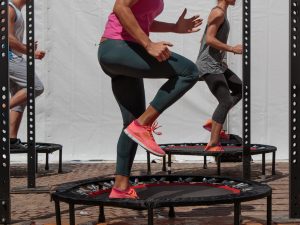 It takes only two minutes of rebounding to flush the entire lymphatic system, while cleansing and strengthening cells and lymph nodes. A further benefit to the body is that during this brief time span the white blood cells of the immune system triple in number and remain elevated for an hour. These specialized cells play a major role in the body’s defense against illness and disease.
It takes only two minutes of rebounding to flush the entire lymphatic system, while cleansing and strengthening cells and lymph nodes. A further benefit to the body is that during this brief time span the white blood cells of the immune system triple in number and remain elevated for an hour. These specialized cells play a major role in the body’s defense against illness and disease.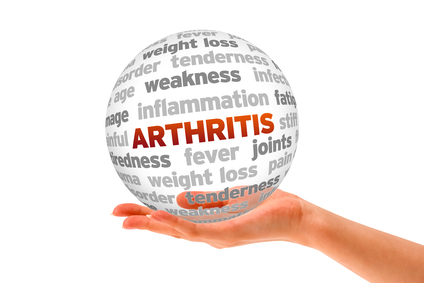
 They are two major forms of arthritis:
They are two major forms of arthritis:  Flexibility: Static stretching and foam rolling may be used as tolerated for the areas of the body that appear to be overactive. These can be performed seated or standing.
Flexibility: Static stretching and foam rolling may be used as tolerated for the areas of the body that appear to be overactive. These can be performed seated or standing.
 Active rest defined: “Involves performing light exercises that stimulate the recovery process without imposing undue stress on the injured body part.”
Active rest defined: “Involves performing light exercises that stimulate the recovery process without imposing undue stress on the injured body part.”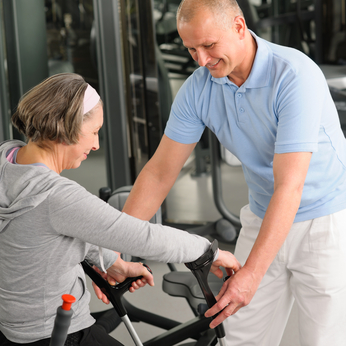
 As with the preparation of most healthcare professionals, one of the most important steps is having a high quality educational program. This helps to ensure that foundational knowledge is acquired and mastered. This cannot be achieved in the “weekend warrior” courses or online test review courses provided as the standard by most personal training programs. Similar to the development of an effective exercise program, a quality education program must follow best practices and specific steps for optimal learning. The
As with the preparation of most healthcare professionals, one of the most important steps is having a high quality educational program. This helps to ensure that foundational knowledge is acquired and mastered. This cannot be achieved in the “weekend warrior” courses or online test review courses provided as the standard by most personal training programs. Similar to the development of an effective exercise program, a quality education program must follow best practices and specific steps for optimal learning. The 
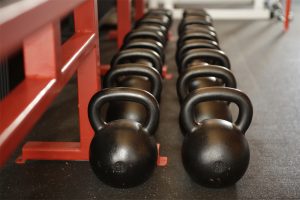 With 50,000 health clubs in the U.S. there are plenty of choices for employment. Within this “vertical” there are numerous sub-categories and options.
With 50,000 health clubs in the U.S. there are plenty of choices for employment. Within this “vertical” there are numerous sub-categories and options.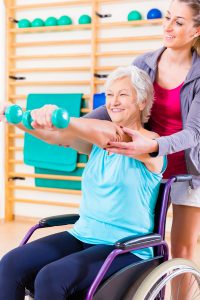 Benefits of working for a medical based fitness center:
Benefits of working for a medical based fitness center:

 There are 3 million breast cancer survivors in the United States today. Survivorship is considered to be from the time that one is first diagnosed to many years later. Fitness professionals are uniquely positioned to help survivors regain control over their mind and body through a well thought out, systematic and progressive exercise program.
There are 3 million breast cancer survivors in the United States today. Survivorship is considered to be from the time that one is first diagnosed to many years later. Fitness professionals are uniquely positioned to help survivors regain control over their mind and body through a well thought out, systematic and progressive exercise program.